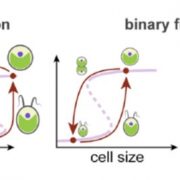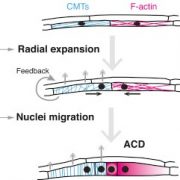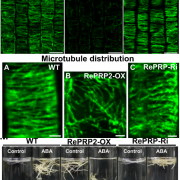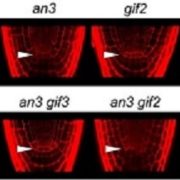Cell wall remodeling and vesicle trafficking mediate the root clock in Arabidopsis (Science)
 Cell wall remodeling and vesicle trafficking mediate the root clock in Arabidopsis
Cell wall remodeling and vesicle trafficking mediate the root clock in Arabidopsis
Living organisms use biological clocks that are coordinated by temporal signals (time) and positional cues (space) during growth and development. In plants, the ‘root clock’ is generated by a mechanism involving rhythmic gene expression in a region called the oscillation zone (the border of the root elongation and differentiation zones) to produce lateral root primordia (LRP) approximately every 6 hours. Wachsman et al. identified the subcellular vesicle trafficking and pectin components as part of the root clock regulators and LRP initiation factors. The LRP cell initiation starts soon after formation of a prebranch site. By dividing the root into several positions, collecting root sections from different times, and analysing them by RNA-sequencing, the authors identified cell wall, vesicle trafficking, and membrane-related genes required for the LRP formation. Mutagenized DR5::LUC seeds screening found the vesicle-trafficking gene GNOM and its suppressor, AGD3, as a novel root clock regulators. GNOM is required for pectin distribution at the cell wall which is synthesized in its esterified form in the Golgi. At the sites of LRP initiation, the pectin subtypes are differentially distributed. This finding uncovers novel components that are essential for root clock regulation and lateral root initiation (Summary by Min May Wong @wongminmay) Science 10.1126/science.abb7250









